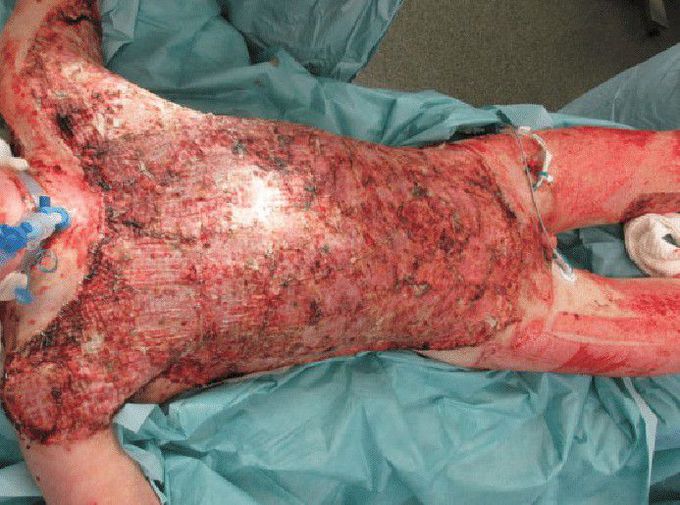


SKIN GRAFT
What is a skin graft? Skin grafting is a surgical procedure that involves removing skin from one area of the body and moving it, or transplanting it, to a different area of the body. This surgery may be done if a part of your body has lost its protective covering of skin due to burns, injury, or illness. Skin grafts are performed in a hospital. Most skin grafts are done using general anesthesia, which means you’ll be asleep throughout the procedure and won’t feel any pain. Why are skin grafts done? A skin graft is placed over an area of the body where skin has been lost. Common reasons for a skin graft include: skin infections deep burns large, open wounds bed sores or other ulcers on the skin that haven’t healed well skin cancer surgery Types of skin grafts There are two basic types of skin grafts: split-thickness and full-thickness grafts. Split-thickness grafts A split-thickness graft involves removing the top layer of the skin — the epidermis — as well as a portion of the deeper layer of the skin, called the dermis. These layers are taken from the donor site, which is the area where the healthy skin is located. Split-thickness skin grafts are usually harvested from the front or outer thigh, abdomen, buttocks, or back. Split-thickness grafts are used to cover large areas. These grafts tend to be fragile and typically have a shiny or smooth appearance. They may also appear paler than the adjoining skin. Split-thickness grafts don’t grow as readily as ungrafted skin, so children who get them may need additional grafts as they grow older. Full-thickness grafts A full-thickness graft involves removing all of the epidermis and dermis from the donor site. These are usually taken from the abdomen, groin, forearm, or area above the clavicle (collarbone). They tend to be smaller pieces of skin, as the donor site from where it’s harvested is usually pulled together and closed in a straight-line incision with stitches or staples. Full-thickness grafts are generally used for small wounds on highly visible parts of the body, such as the face. Unlike split-thickness grafts, full-thickness grafts blend in well with the skin around them and tend to have a better cosmetic outcome. Skin graft procedure A surgeon will begin the operation by removing skin from the donor site. If you’re getting a split-thickness graft, the skin will be removed from an area of your body that’s usually hidden by clothing, such as your hip or the outside of your thigh. If you’re getting a full-thickness graft, preferred donor sites are the abdomen, groin, forearm, or area above the clavicle (collarbone). Once skin is removed from the donor site, the surgeon will carefully place it over the transplant area and secure it with a surgical dressing, staples, or stitches. If it’s a split-thickness graft, it may be “meshed.” The doctor may punch multiple holes in the graft to stretch out the piece of skin so that he or she may harvest less skin from your donor site. This also allows fluid to drain from under the skin graft. Fluid collection under the graft may cause it to fail. In the long term the meshing may cause the skin graft to take a “fish-net” appearance. The doctor also covers the donor area with a dressing that will cover the wound without sticking to it. Aftercare for a skin graft The hospital staff will watch you closely after your surgery, monitoring your vital signs and giving you medications to manage the pain. If you’ve had a split-thickness graft, your doctor may want you to stay in the hospital for a few days to make sure the graft and the donor site are healing well. The graft should start developing blood vessels and connecting to the skin around it within 36 hours. If these blood vessels don’t begin to form shortly after the surgery, it could be a sign that your body is rejecting the graft. You may hear your doctor say that the graft “hasn’t taken.” This may happen for several reasons including infection, fluid or blood collecting under the graft, or too much movement of the graft on the wound. This may also happen if you smoke or have poor blood flow to the area being grafted. You may need another surgery and a new graft if the first graft doesn’t take. When you leave the hospital, your doctor will give you a prescription for painkillers to help minimize the pain. They’ll also instruct you on how to care for the graft site and the donor site so they don’t get infected. The donor site will heal within one to two weeks, but the graft site will take a bit longer to heal. For at least three to four weeks after the surgery, you’ll need to avoid doing any activities that could stretch or injure the graft site. Your doctor will tell you when it’s safe to resume your normal activities.
Thank you for such detailed information regarding grafts But is there any immune mediated or hypersensitivity reactions due to grafts?


